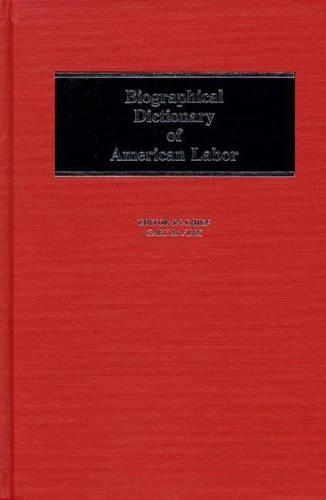
Biographical Dictionary of American Labor
(Hardback)
Publishing Details
Biographical Dictionary of American Labor
By (Author) Gary M. Fink
Bloomsbury Publishing PLC
Greenwood Press
19th December 1984
United States
Classifications
Tertiary Education
Non Fiction
Social and cultural history
Economic history
335.30922
Physical Properties
Hardback
767
Description
Product information not available.
Reviews
In addition to containing a great deal of useful information beyond the traditional brief format of the others it is also one of the few sources for information on deceased labor leaders. There are several useful appendices: entries by union affiliation, religious preference, place of birth, formal education, appointed and elected public offices, and an index.-RQ
This updated and expanded revision of the Biographical Dictionary of American Labor Leaders, originally published in 1974, is an invaluable reference tool for the serious scholar of labor history. The new volume includes some 50 percent more biographical entries, particularly among women, radical labor figures, and blacks. Moreover, a broad statistical portrait' of labor leaders is provided through a detailed examination of numerous institutional, biographical, social, and political variables for four crucial periods--1900, 1925, 1946, and 1976. This data is amplified by means of several fictionalized representative biographies illustrating the general characteristics of each time period. The bibliography also has been brought up to date. Essential for most academic and research libraries.-Library Journal
"In addition to containing a great deal of useful information beyond the traditional brief format of the others it is also one of the few sources for information on deceased labor leaders. There are several useful appendices: entries by union affiliation, religious preference, place of birth, formal education, appointed and elected public offices, and an index."-RQ
"This updated and expanded revision of the Biographical Dictionary of American Labor Leaders, originally published in 1974, is an invaluable reference tool for the serious scholar of labor history. The new volume includes some 50 percent more biographical entries, particularly among women, radical labor figures, and blacks. Moreover, a broad statistical portrait' of labor leaders is provided through a detailed examination of numerous institutional, biographical, social, and political variables for four crucial periods--1900, 1925, 1946, and 1976. This data is amplified by means of several fictionalized representative biographies illustrating the general characteristics of each time period. The bibliography also has been brought up to date. Essential for most academic and research libraries."-Library Journal
Author Bio
nk /f Gary /i M. /r ed.-in-chief
